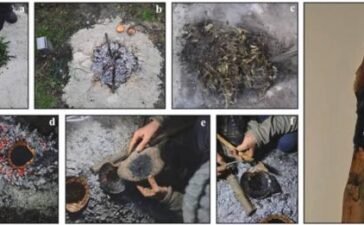The Behistun Inscription is an engraving located on the cliff of Mount Behistun (said to have had the meaning of ‘place where the gods dwell’ in antiquity). This inscription was written in three languages and is accompanied by a large rock relief. The Behistun Inscription is for the field of Assyriology what the Rosetta Stone is for Egyptology. Apart from aiding the decipherment of the cuneiform script, another importance of the Behistun Inscription is that it is the only known monumental text created by the Achaemenids that documents a specific historical event.
Mount Behistun: A Historic Cliffside Monument
The Behistun Inscription is located on Mount Behistun, about 60 m (196 ft) above the plain, in the western Iranian province of Kermanshah. The inscription has been measured to be about 15 m (49 ft) in height and 25 m (82 ft) in width, and was created by the Achaemenid king, Darius I in 521 BC. The inscription may be divided into four separate parts. The first of these is a large relief in which various figures are represented, the most prominent being Darius himself. The king is shown with a bow in his hand, a sign of his sovereignty.
Darius is depicted with one of his feet on the chest of an unidentified individual lying on his back. It is popularly believed that this figure is that of Gaumata, the pretender to the Achaemenid throne. Behind the king are Intaphrenes, Darius’ bow carrier, and Gobryas, his lance carrier. Before the king are nine individuals tied together with a rope around their necks and with their hands bound behind their backs. These are the nine rebels recorded to have been defeated by Darius. Finally, there is a representation of the supreme god Ahura Mazda above the mortals.

Relief of Darius I in Persepolis (Derfash Kaviani (درفش کاویانی)/CC BY-SA 3.0)
The other three parts of the inscription are the texts. These texts were written in the cuneiform script and tell (more or less) the same story. Nevertheless, they were written in three different languages. One of them is in Old Persian, another in Elamite, and the third in Akkadian. It has also been pointed out that a version of the Behistun Inscription, in Aramaic, was discovered on a papyrus scroll in Egypt.

Papyrus with an Aramaic translation of the Behistun inscription’s text. (Jona lendering/CC BY-SA 4.0)
The Rise of Darius I: Gaumata’s Impersonation and Defeat
In terms of content, the Behistun Inscription begins with Darius introducing himself. Here, the king provides his genealogy, perhaps as a means of justifying his occupation of the Achaemenid throne. The king also lists the countries that are under the control of the empire, and attributes his possession of them to Ahura Mazda, “…These are the countries which came to me; by the grace of Ahura Mazda, I became king of them…”

Ahura Mazda (on the right, with high crown) presents Ardashir I (left). (Photo Ginolerhino 2002/CC BY-SA 3.0)
After this introduction, Darius provides his version of events leading to his attainment of the Achaemenid throne. According to the text, a Magian by the name of Gaumata impersonated Bardiya, the slain brother of Cambyses, who, at that time, was the king of the Achaemenid Empire. Gaumata is said to have usurped Cambyses’ power and became king. Darius succeeded in slaying Gaumata and became the new king. The next part of the text is about the rebellions that broke out across the empire during Darius’ reign. The king records that he had all these rebellions put down and defeated 9 kings in the process. Thus, this part of the text can be regarded as an attestation of the king’s military prowess.
The Enduring Memory of the Behistun Inscription
The Behistun Inscription has been mentioned by several ancient authors, though some errors were made by them. For example, Ctesias, a Greek physician and historian, and Diodorus Siculus, attribute the text to the legendary Queen Semiramis. The memory of the monument continued even into the medieval period. Nevertheless, its creator was forgotten. It has been said that during this period, locals are attributed in the inscription to Khosrow II, one of the last Sassanian kings.

Close-up of the inscription (KendallKDown/CC BY-SA 3.0)
As for the translation of the text, it was only attained during the 19 th century, which allowed a correct interpretation of the relief. Prior to that, the carvings have been variously interpreted as a teacher punishing his students, Christ and his 12 apostles, and Shalmaneser of Assyria and the 12 tribes of Israel.
Top image: The Behistun Inscription, 520 BC, is a UNESCO World Heritage Site. Source: PersianDutchNetwork/CC BY-SA 4.0
By Wu Mingren






